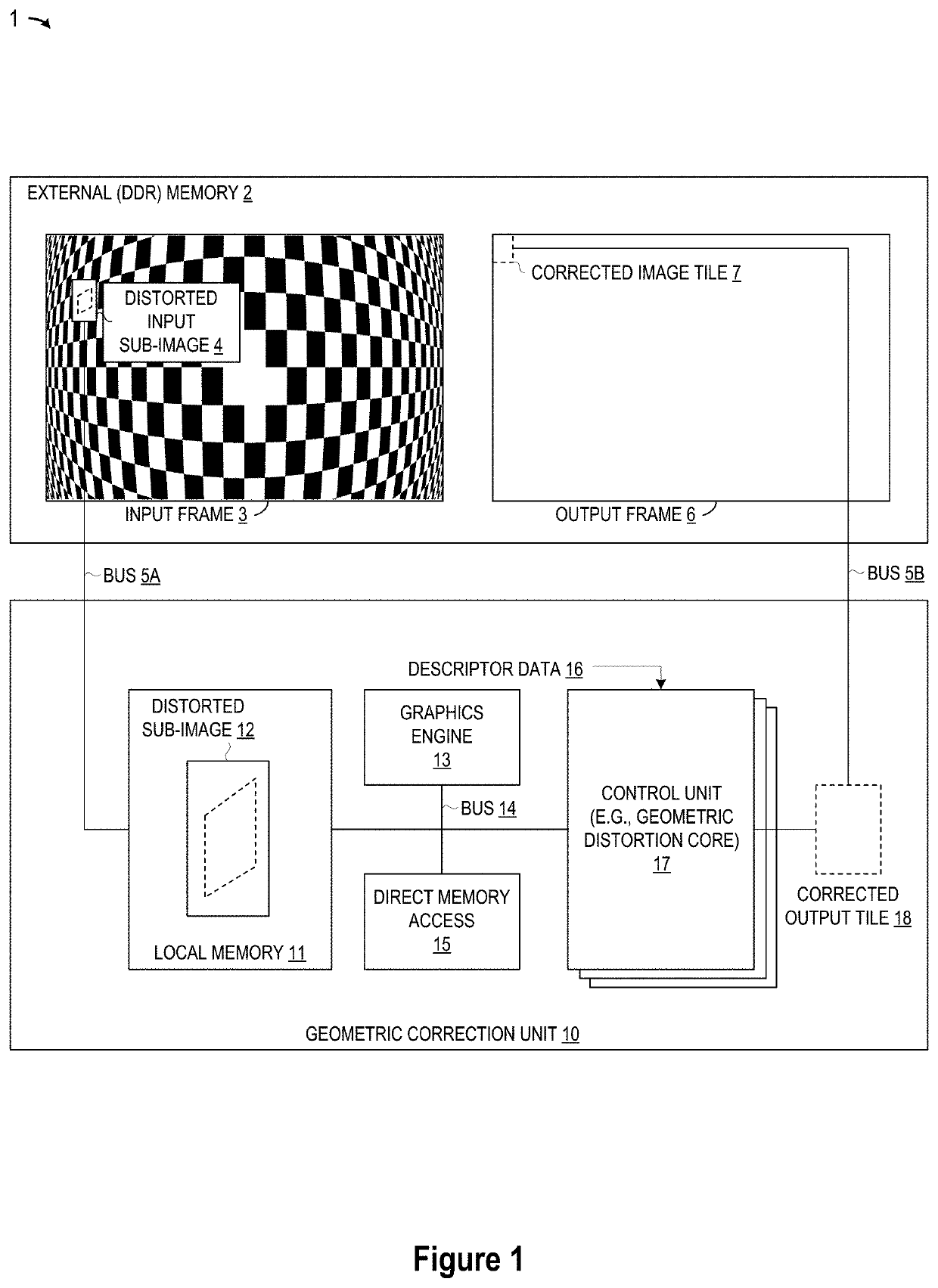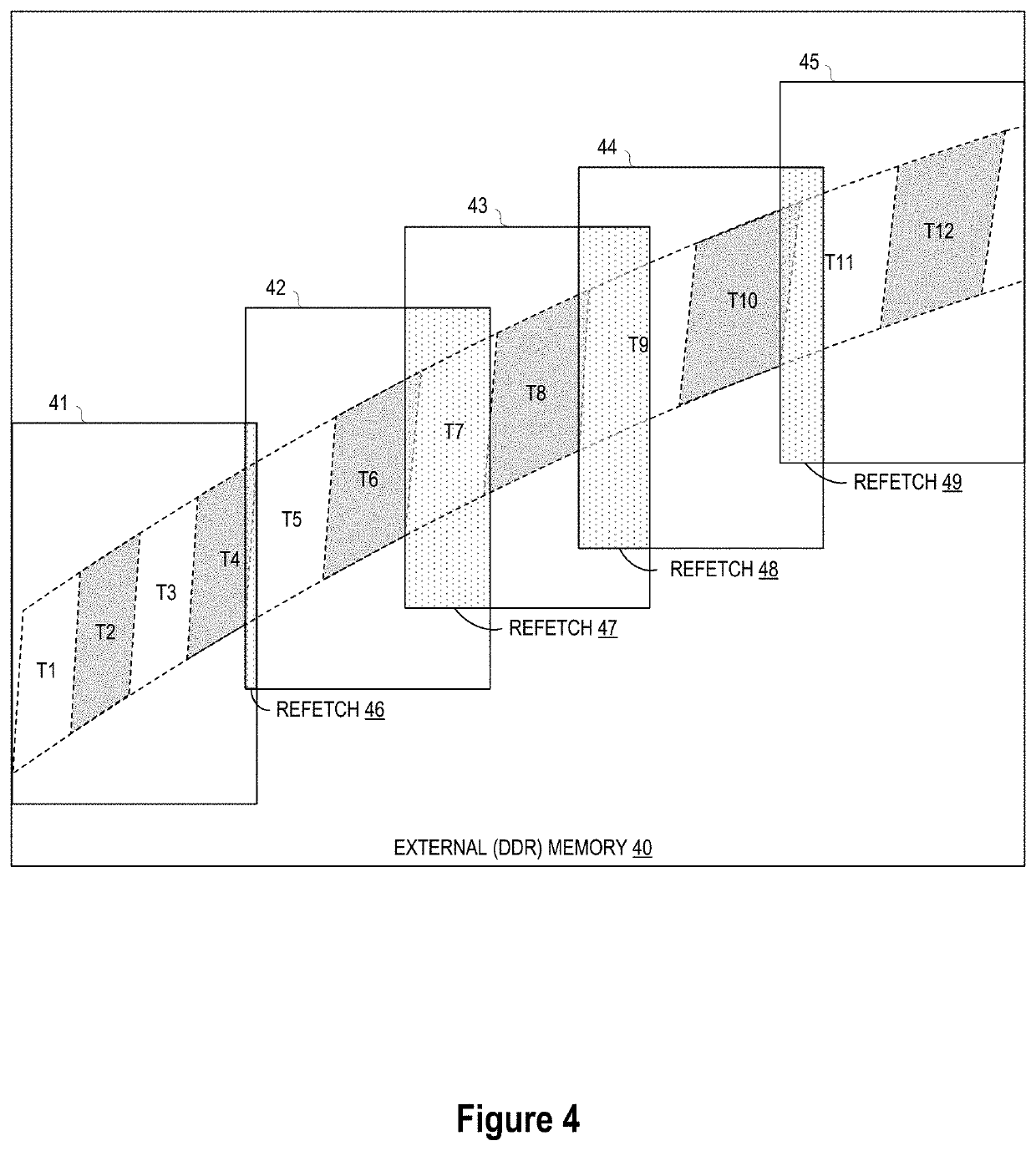Adaptive Tiles for Geometric Correction
a technology of geometric distortion and adaptive tiles, applied in the field of image processing, can solve problems such as geometric distortion, distortion or pincushion distortion, and distortion of objects and their surrounding areas
- Summary
- Abstract
- Description
- Claims
- Application Information
AI Technical Summary
Benefits of technology
Problems solved by technology
Method used
Image
Examples
Embodiment Construction
[0011]An apparatus, system, architecture, methodology, and program code are described for using adaptive sub-images to perform geometric distortion correction by loading internal memory with adaptively sized input blocks which are sized to capture multiple input sub-images for distortion processing together as a block, thereby improving device performance, increasing efficiency of internal memory usage, and reducing bandwidth requirements for mapping multiple input image sub-images stored in external memory. In selected embodiments, the adaptively sized input blocks are configured offline as a set of descriptors which are used by distortion correction hardware to specify how many input sub-images fit into the internal memory. In operation, a hardware-based geometric correction unit processes distorted input sub-images stored in external memory by using a configurable input block to fetch multiple distorted input sub-images for storage in internal memory, such as an embedded buffer. ...
PUM
 Login to View More
Login to View More Abstract
Description
Claims
Application Information
 Login to View More
Login to View More - R&D
- Intellectual Property
- Life Sciences
- Materials
- Tech Scout
- Unparalleled Data Quality
- Higher Quality Content
- 60% Fewer Hallucinations
Browse by: Latest US Patents, China's latest patents, Technical Efficacy Thesaurus, Application Domain, Technology Topic, Popular Technical Reports.
© 2025 PatSnap. All rights reserved.Legal|Privacy policy|Modern Slavery Act Transparency Statement|Sitemap|About US| Contact US: help@patsnap.com



